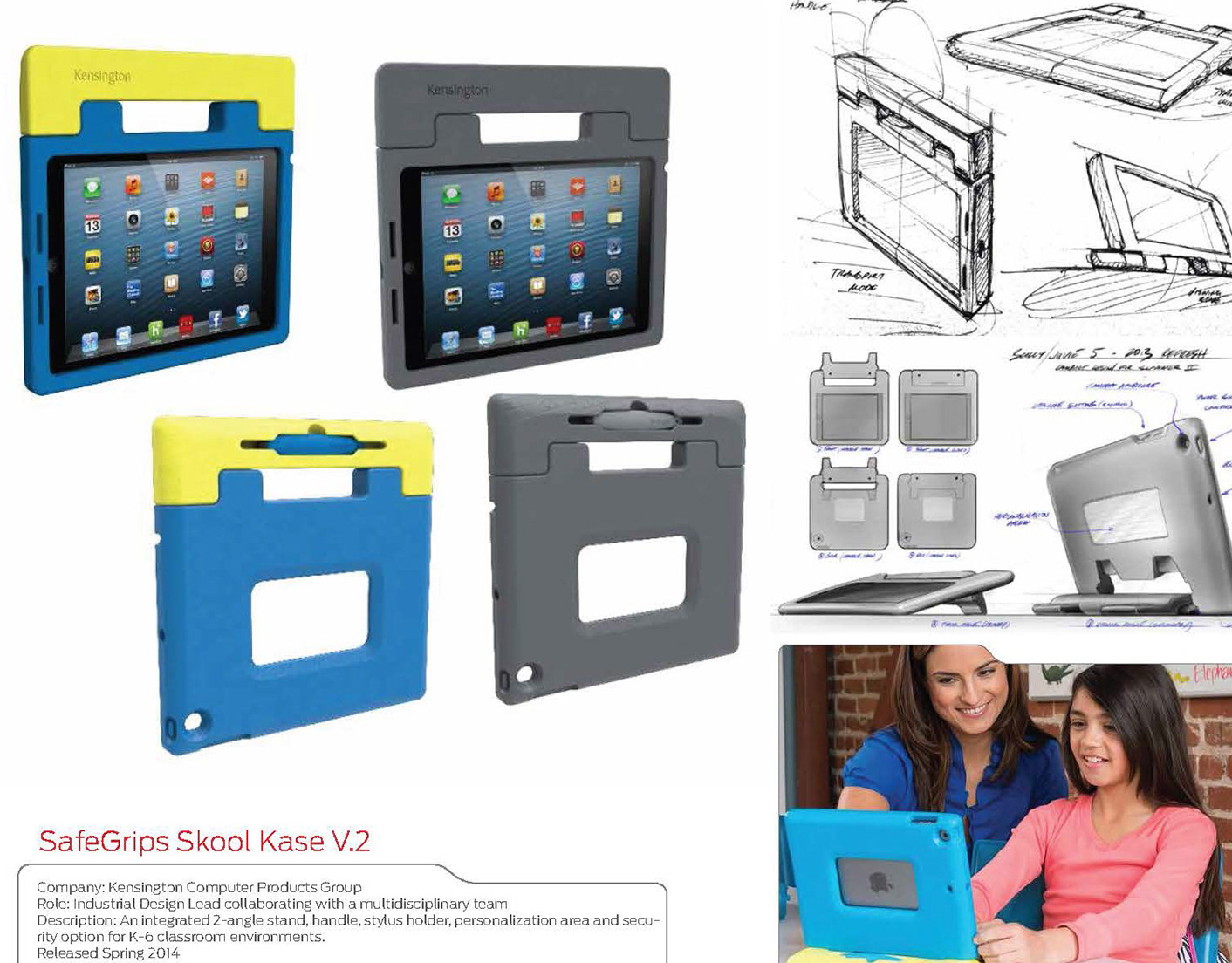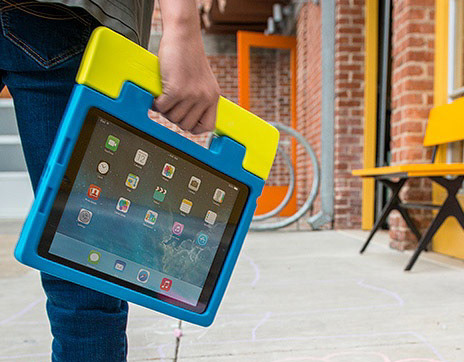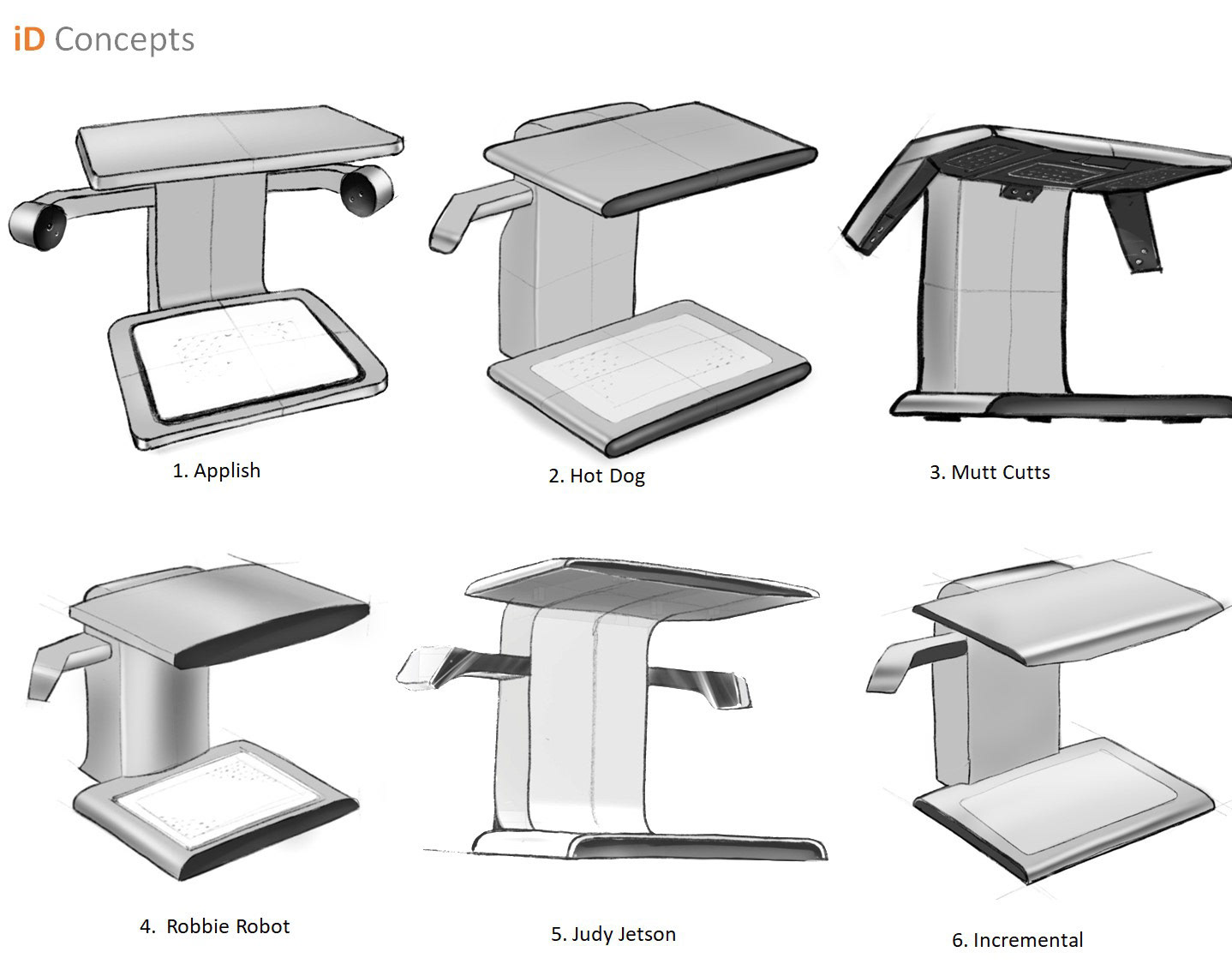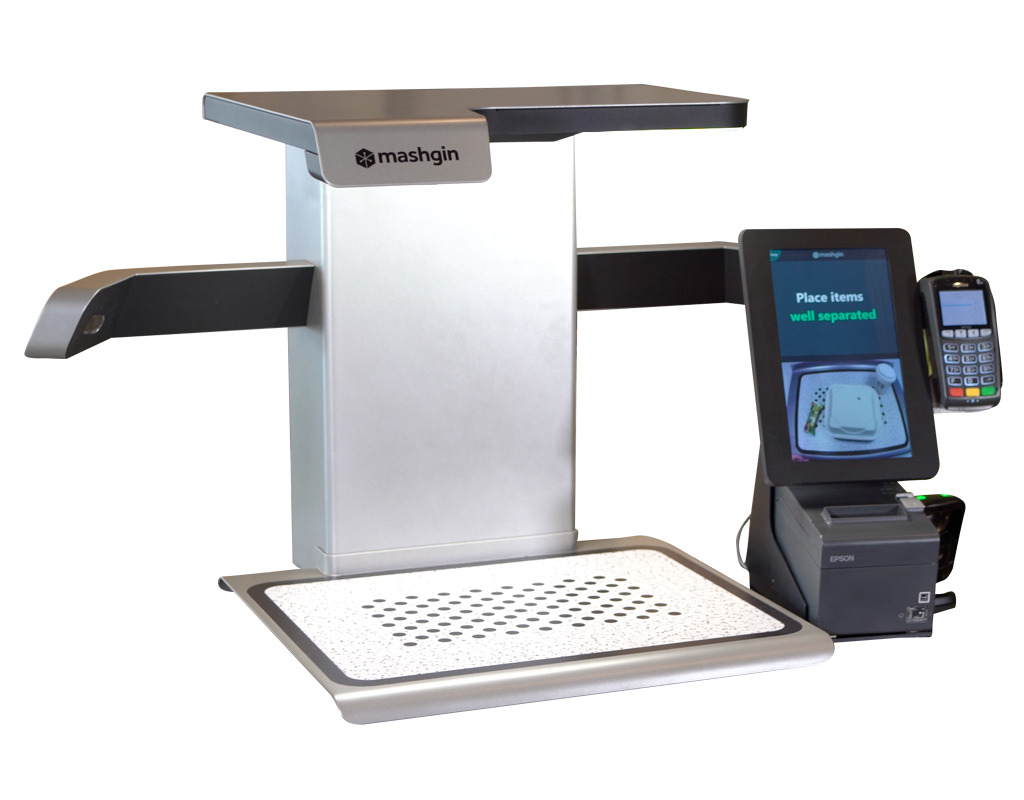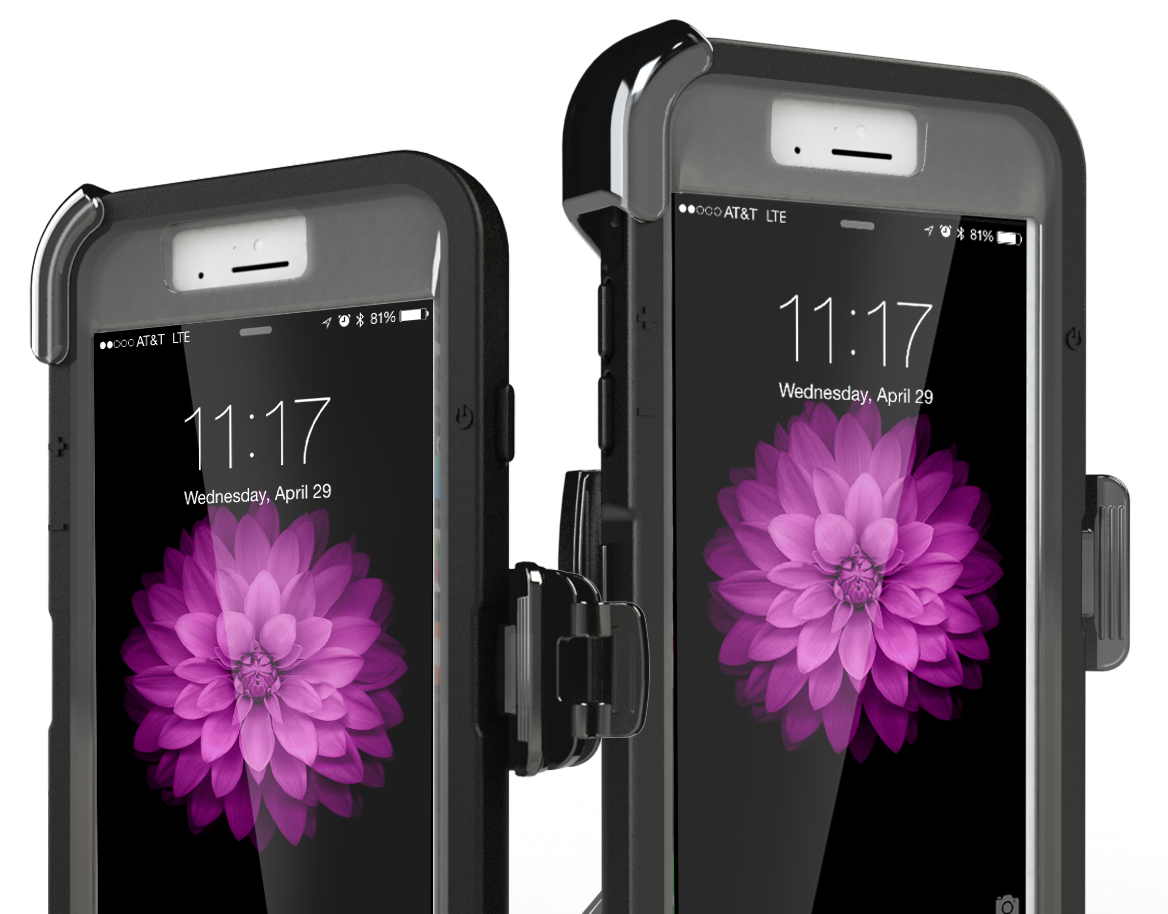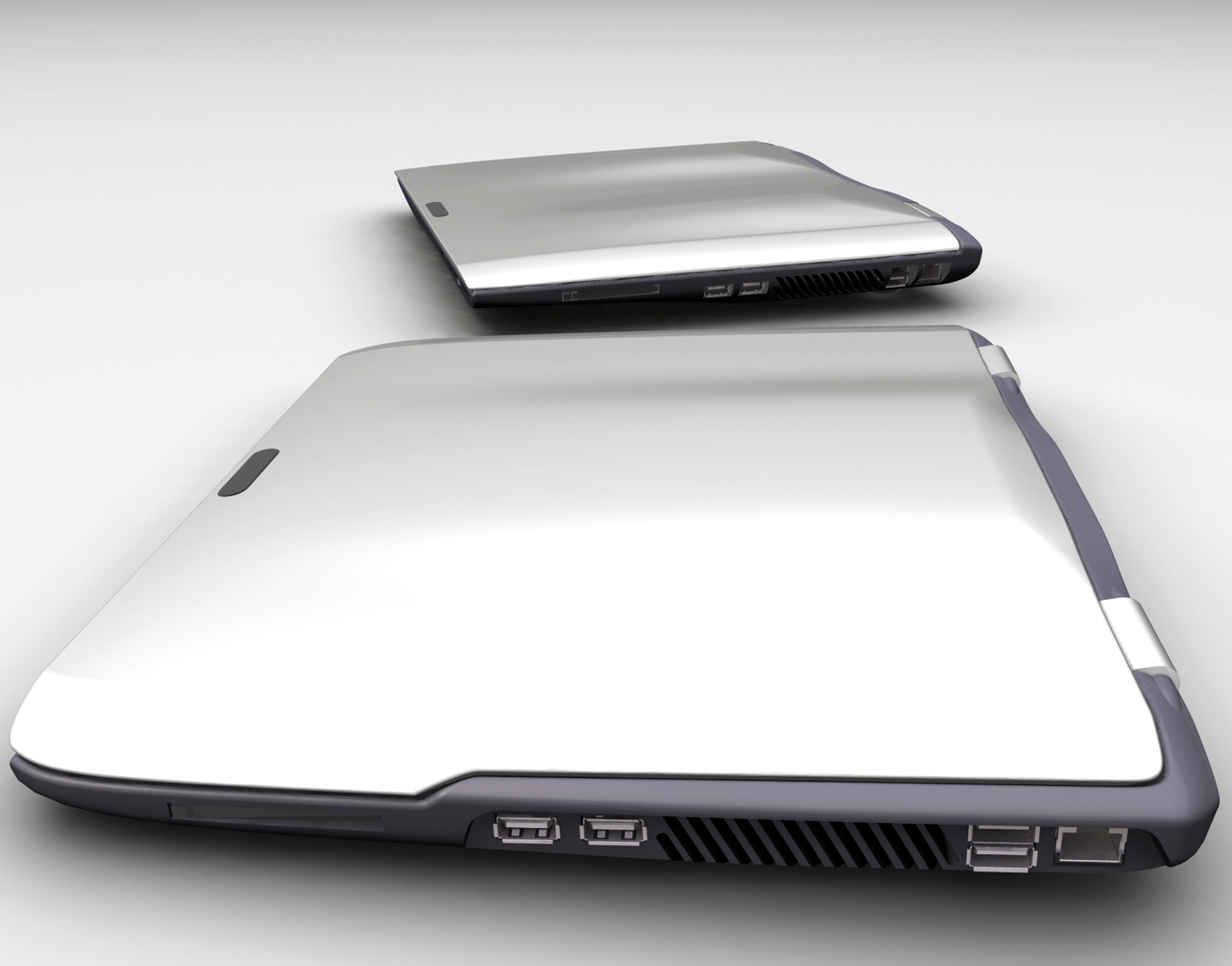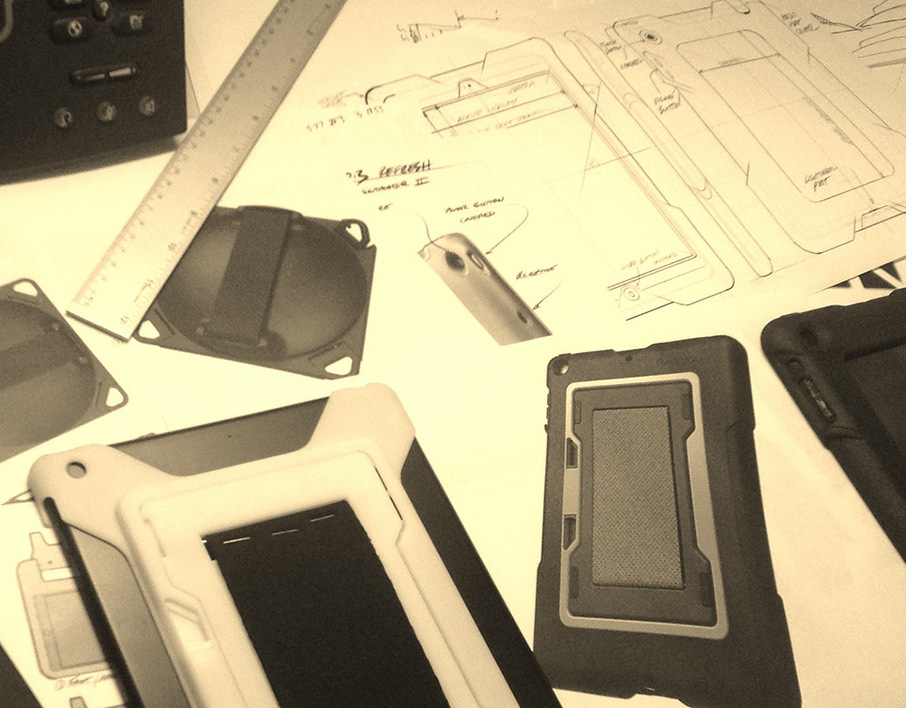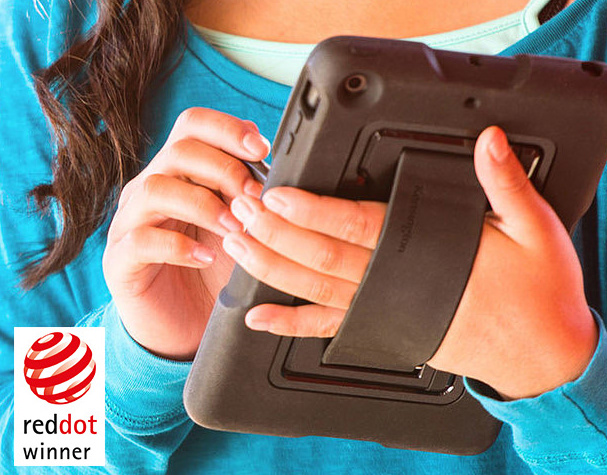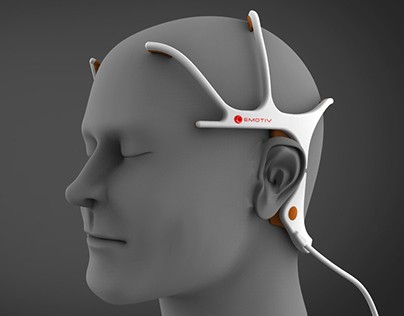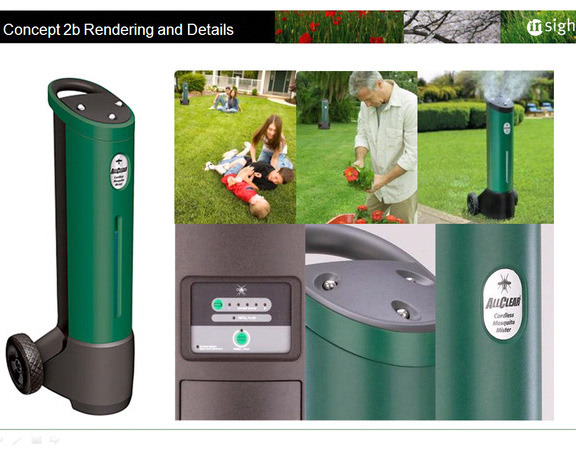With a single USB cable ThinkPad customers could attach a monitor, mouse, keyboard, Ethernet, hard drives and audio. ID collaborated with an internal multi-disciplinary team as well as manufacturing partner, Kensington, on the design and development of this device which passed rigorous requirements to be branded "ThinkPad".
Several concept sketches based on initial specs, marketing and human factors research were produced for review and iteration with the team. Physical mock-ups and more detailed assembly drawings of chosen concepts were produced.
Concept drawing showing the initial form and assembly. The product is slim to maximize desk space with status LED's, USB port, audio ports and video mode switch button clearly arranged on its bezel. The steel foot and "nose weight" keeps the slightly angled product rock-solid with cables flowing from it back arranged in order of use priority.
The project initially began with theYamato, Japan design team and handed off to the US team. Numerous concept drawings and mock-ups were produced that helped our team assess various form factors, use scenarios and map optimal locations for buttons, LEDs and ports.
BunkSpeed HyperShot rendering based on initial ProE CAD enclosure over internal components from manufacturing partner.
After evaluation and assessment of the mock-ups and drawings by management and executives, I created a CAD parts assembly in ProEngineer used to dimension layouts for vendor quotes and artwork specification documents.
The general housing assembly I created in the CAD tool Pro/E was sent with the 2d ID control drawings to our manufacturing partner, Kensington, whom added the internal mechanical features. CAD files were reviewed via the WebEx online conferencing tool and PowerPoints for iteration. ID recommendations/questions were given, Kensington gave feedback on feasibility, internal team assessed and necessary changes were implemented. Rapid prototyped models were created and assessed with the team before the tooling stages.
The fishing weight at the "nose" of this CNC-ed rapid-prototyped model (left) was used to assess the counterbalance needed for the product when all the cables were attached. A solid metal base and a mechanically fixed weight were added to the final design for the device making it "rock solid".
This quick sketch of a bezel concept was proposed to our manufacturing partner and implemented in final design.
The above product was referenced to show how we wanted the mirror finish translucent bezel to look.
Tooled sample parts were inspected for molding flaws, fit and finish before mass production. Through the process reports were given to the internal development team consisting of project managers, technical leads, marketing and human factors for approval and to ensure the ID met the target GA date.
